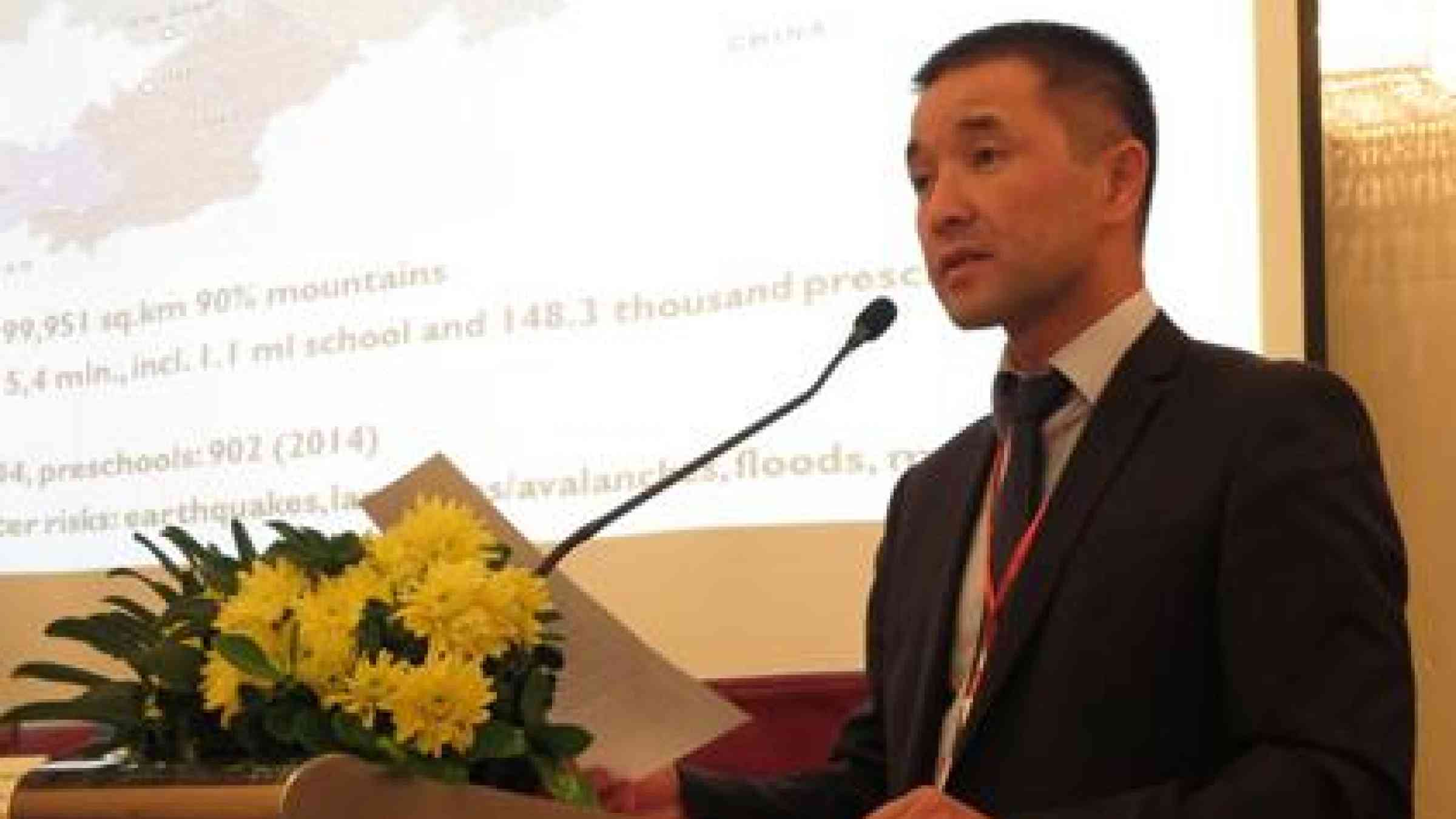Kyrgyz Republic assesses over 3,000 schools

BANGKOK, 2 July 2014 – The major push for disaster-safe schools in the Kyrgyz Republic perfectly illustrates how good risk information can focus political will and help direct resources towards reducing underlying risk factors (in line with Priority 4 of the Hyogo Framework for Action, the global agreement on reducing disaster risk).
The government is set to embark on a comprehensive five-year safe schools programme after a nationwide assessment in 2012-13 found that the vast majority of the country’s 1.1 million children were learning in classrooms and buildings that did not meet existing standards and regulations.
The implications are serious in a country which experiences regular earthquakes including five in the last six months of relatively low magnitude from 4 to 5.4 on the Richter scale.
Twelve teams of two have assessed the country’s 2,204 schools and 902 pre-schools and categorized 84 percent of schools and 85 percent of pre-schools as unsafe.
The Head of Infrastructure and Public Purchase of the Ministry of Educational Science, Mr Bakyt Kadyrkulov, said the nationwide study had provided the Kyrgyz Republic with a baseline from which “budget estimates could be generated so that we could aim at making our school facilities safe”.
Mr Kadyrkulov told a Safe Schools side event at last week’s 6th Asian Ministerial Conference on Disaster Risk Reduction, hosted by the Government of Thailand and co-organised by UNISDR, that “The Ministry worked with many different partners from within the country and internationally, which gave us the variety of expertise that helped identify the vulnerability of our schools.
“We have learnt several lessons along the way. One of the most important is the need to prioritise because of the size of the task. Another is to involve the community and the local authorities and have the political will and readiness to assess the situation and then take action. This requires close coordination.
“I would also recommend the involvement of technical and engineering specialists so that technology, for retrofitting for example, is adapted to local conditions appropriately. Finally it is really important to maintain disaster data, make it accessible and easy to understand.”
The assessment teams conducted a series of interviews and visual inspections at each school that looked at structural safety; vulnerability and exposure to disaster; the condition of facilities and utilities; and the degree of risk awareness and preparedness.
The Kyrgyz Republic, in Central Asia, has a population of 5.4 million and experiences a variety of hazards, including earthquake, landslide, flood, avalanches and mudflows.